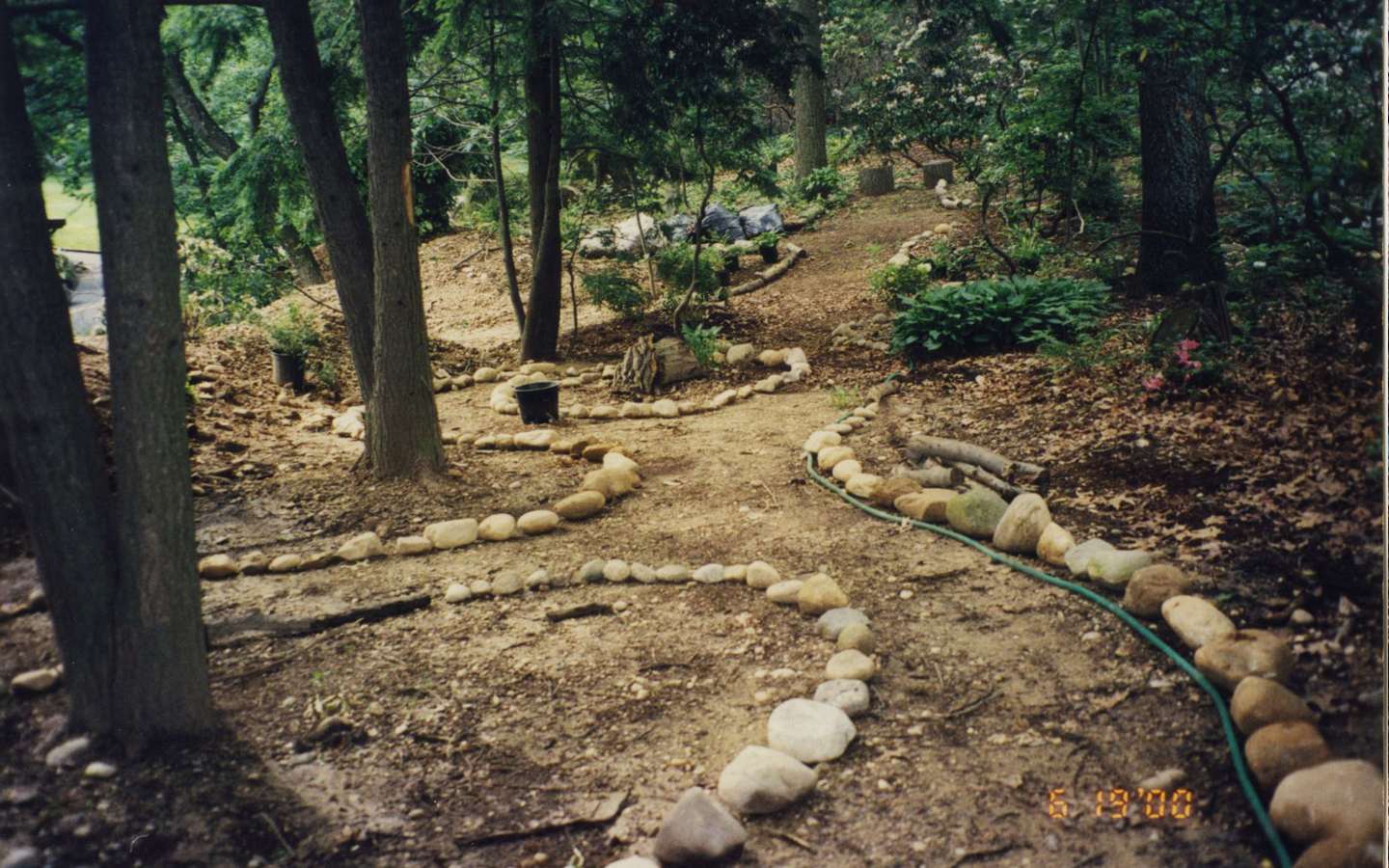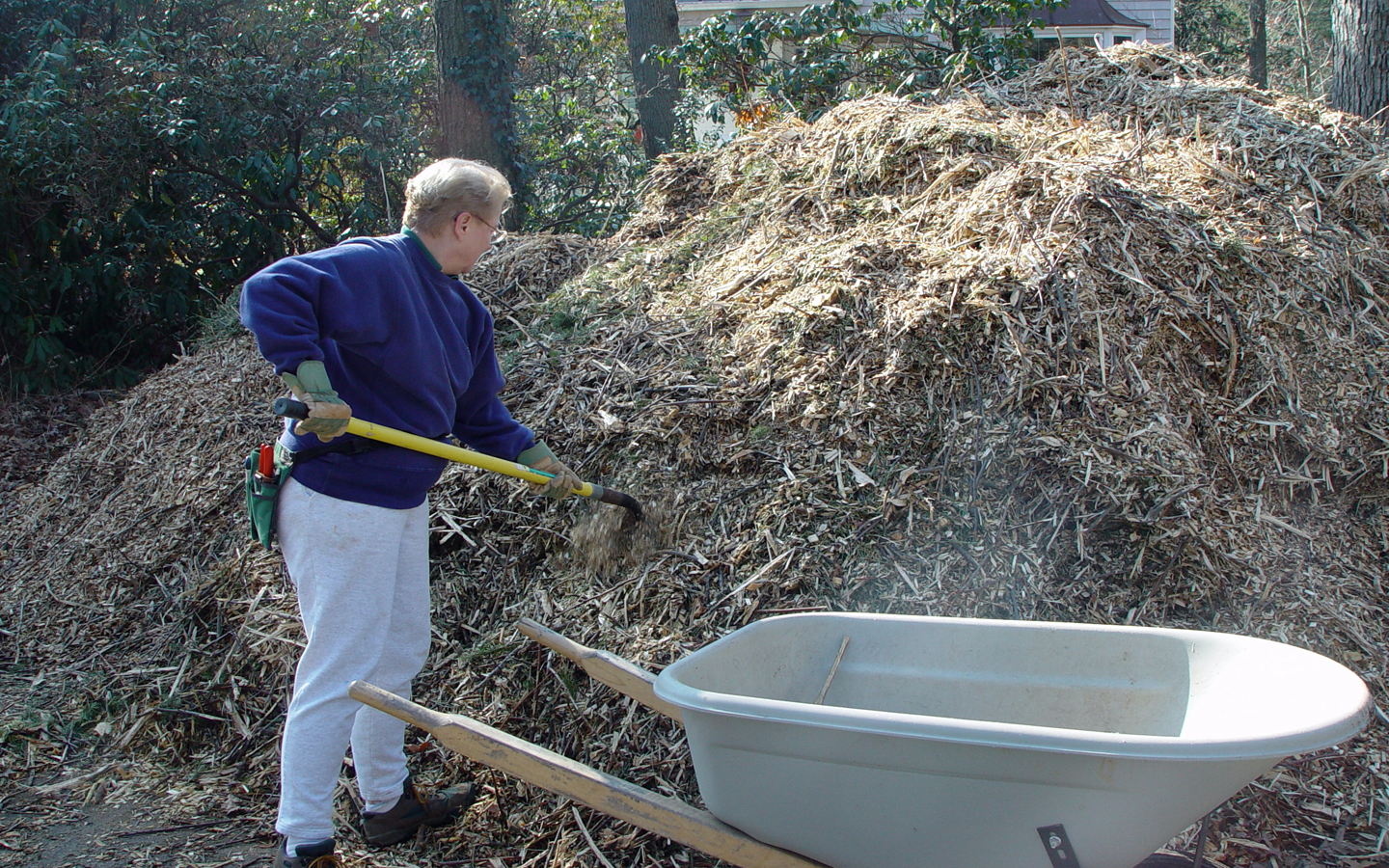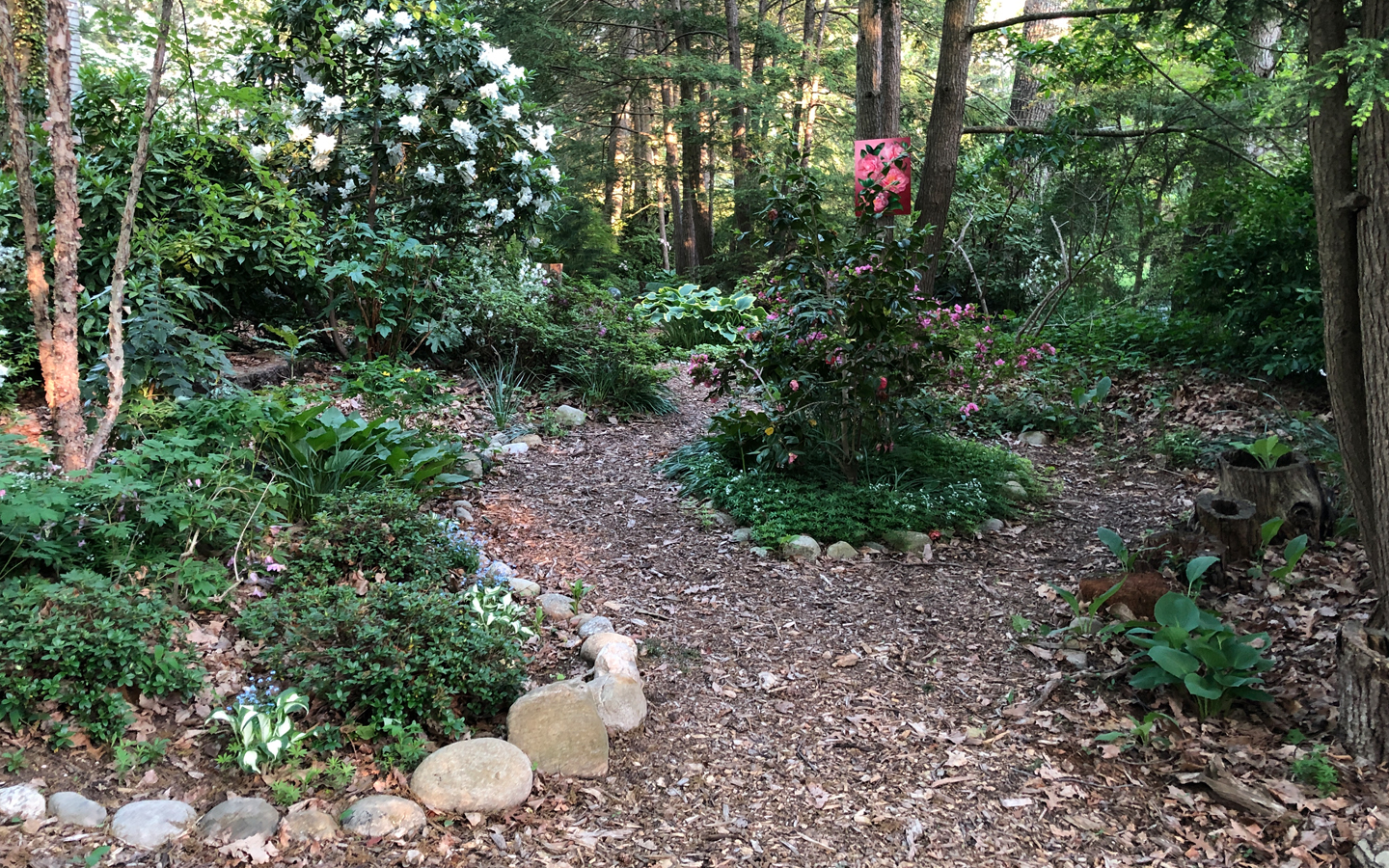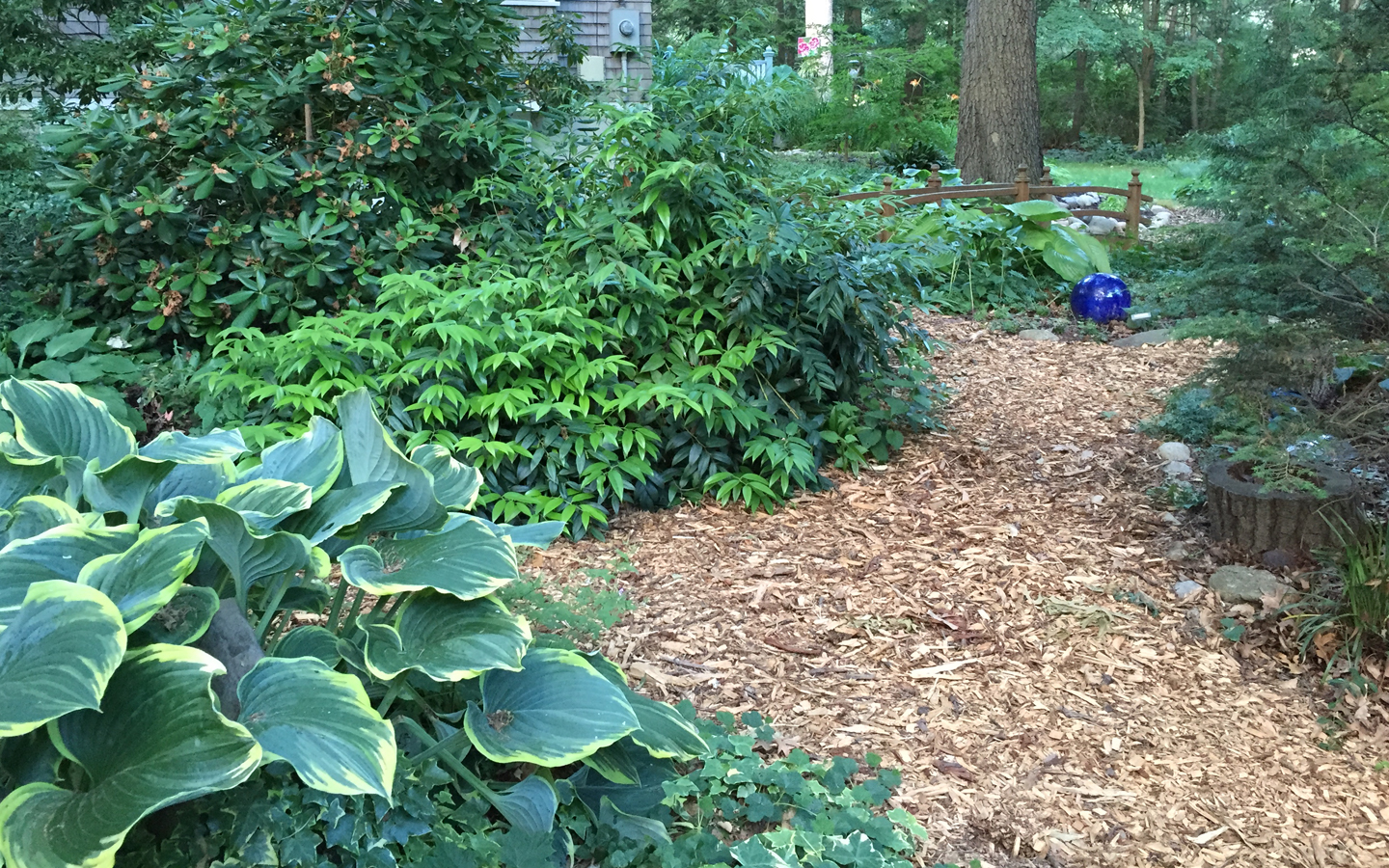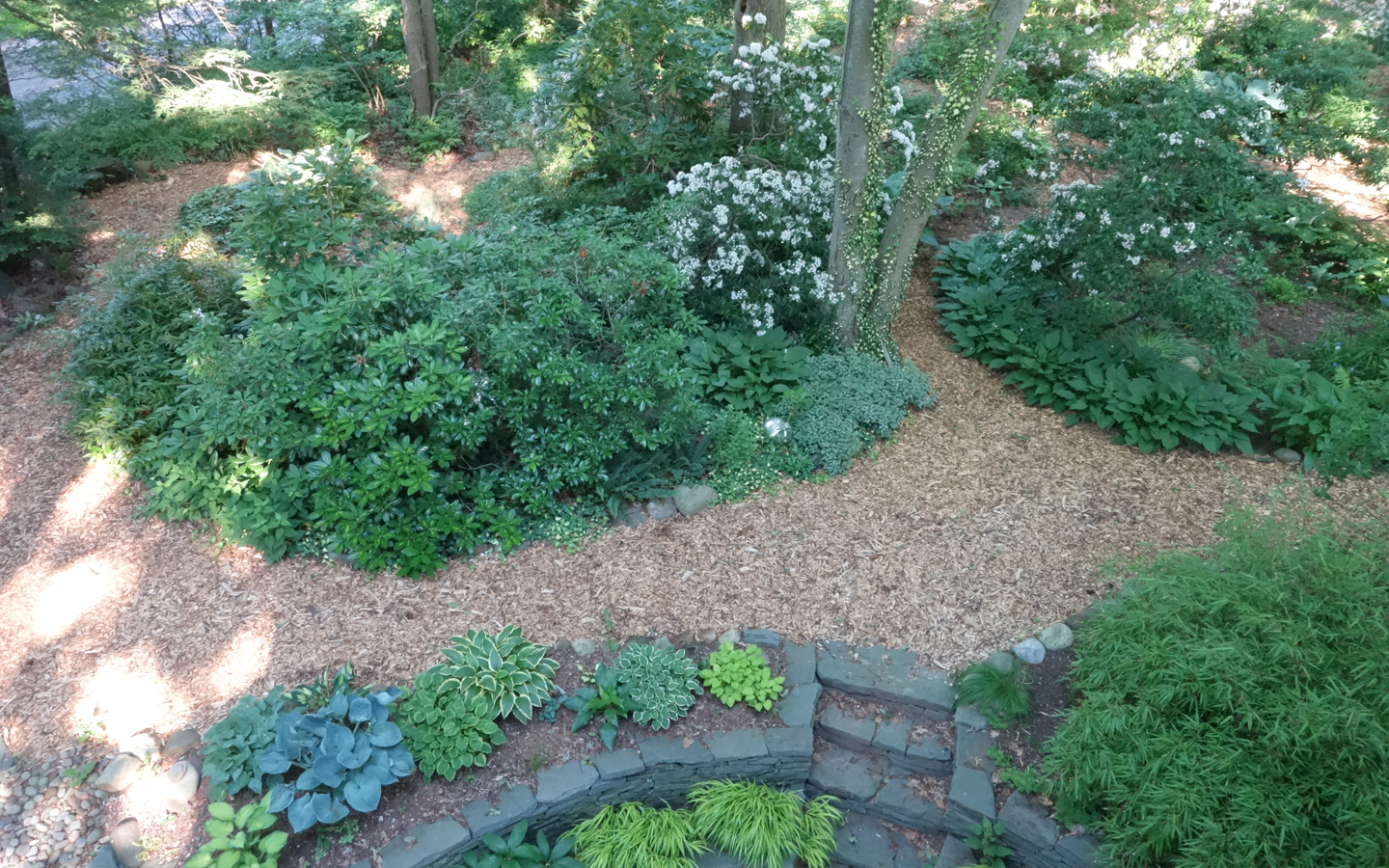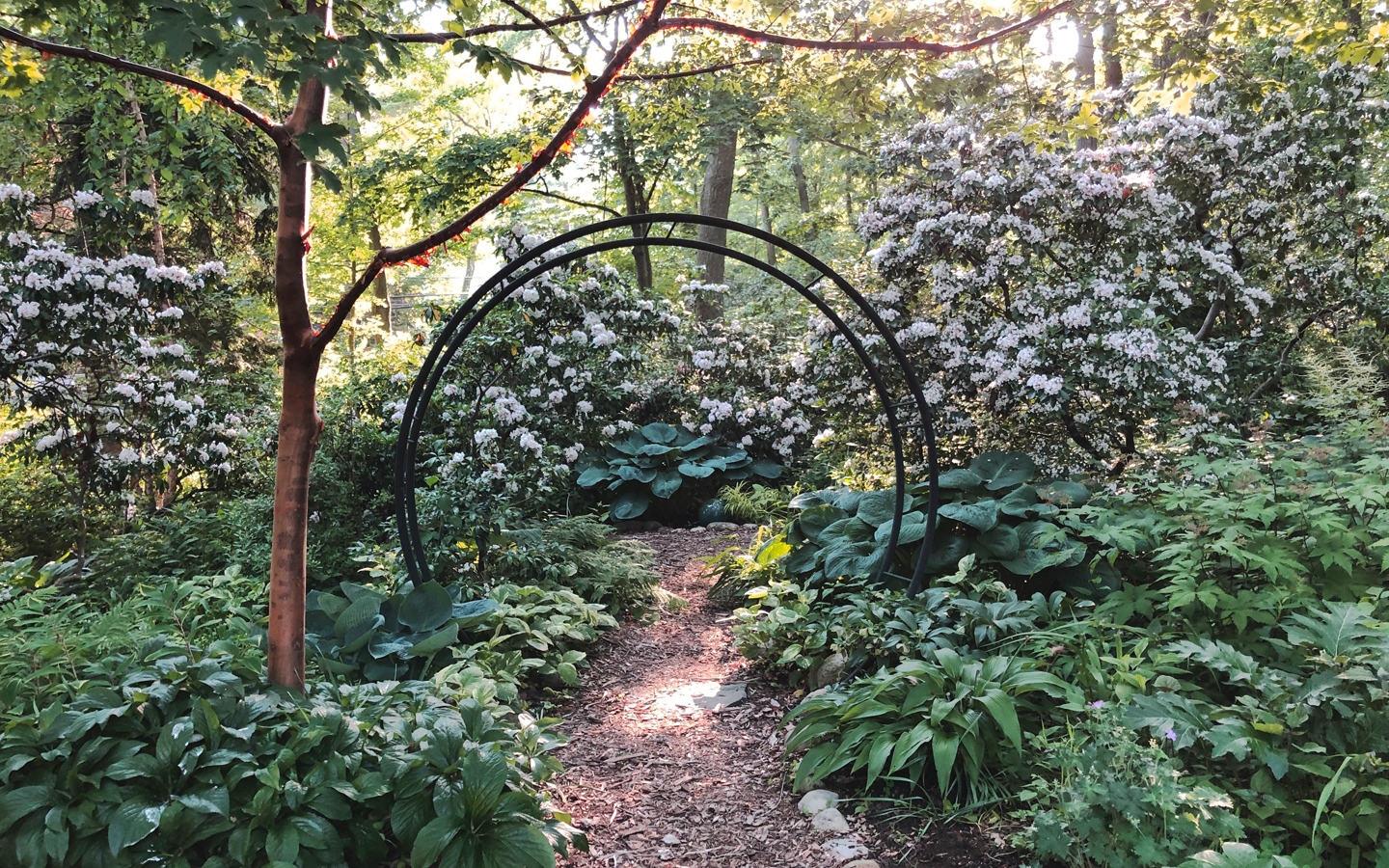My idea of the garden I wanted to create around my new home when I bought it in 1989, was a place to immerse myself, not a garden to be admired while sitting on the deck. I had no particular plan that I imagined. Instead, I let the woodland speak to me.

The autumn woodland minus the weeds, vines, invasives and cracked branches.
The area I was considering was unconstructed. An untouched mix of woodland weeds with prickles and thorns. Vines that entangled my ankles attempting to bring me to my knees. Invasives on the New York State list of plants to avoid was like a who’s who of what I had in my garden. What problems weren’t on the ground were overhead. Cracked & broken tree branches to duck under and avoid in the wind lest they clobber me on their hasty descent. Generally speaking a dense unloved mess.
But I persevered. I am not just a gardener but I am also an artist who sees things that others don’t. I was determined to rescue this plot of land. To provide it with dignity.
Over time and with changes of season I took to walking around and through the woods, enjoying the shade, and the various greens and textures that a woodland presents. The sights are more subtle in the woods. No sunshine that makes you squint to limit your vision. No brilliant expanses of color to draw your eye.
You notice instead the hint of a breeze dancing through the nodding leaves. A patch of mild transient sunshine peering through the dappled shade. I began to hear what the woods were saying to me. To feel what it was saying. I learned what to treasure, what was real and meant to be, and what didn’t belong.
A gardener, decades before me, carefully planted hemlocks surrounding the outer fringes of the property. These were now stately trees forty or so feet tall. These added an aged presence to the scene and provided a strong sense of enclosure.
In researching what was native to the area I found that the Mountain Laurels which grew throughout the garden were here before any of our houses appeared. I focused on preserving them. These native Kalmia latifolia were under stress due to the many years of drought they were experiencing. I was determined to honor them and work toward their preservation.
My strolls through these thickets helped me pinpoint the laurels and I began walking around them to see the best way to showcase them. I decided that they would be the center of individual beds and that I could connect various beds with paths and allow me to admire these architecturally diverse shrubs from all angles.
Growing in the woods surrounding and into the Laurels was a mix of ivy and poison ivy. These had to go. Over time I began to remove the ivy but most of the poison ivy removal I left to the pros. It was a few years before that initial episode was mostly behind me but to state a fact, it is due diligence that keeps these plants from overtaking the woods yet again.
As the paths began to appear I decided that the springy feel of the natural woodland ground brought a comforting physical experience right up through the soles of my shoes into my body. I was determined to use wood chips to maintain that back-to-nature harmonious and quiet experience. I continue this even now. About every 5 years the wood chips have converted to compost and are scooped into the garden beds. New wood chips are delivered in huge piles and the process begins again.
Delineating the paths I had a simple solution. With each shovel I put in the ground I removed yet another river rock. The street along one side of my garden is named Stony Hollow Road for a reason and to this day, over 30 years later, I am still removing rocks from their hiding places under the ground.
Another decision I made was to avoid dead ends. Life isn’t about dead ends, it is about transitions and journeys. Each path I created offers a choice of direction. I call it the road less traveled concept. This enabled me to have a different stroll each time I walked around the garden. New sights to see, new thoughts to contemplate, new experiences with each journey.
These woodland paths have gifted me with decades of intimate and satisfying connections with nature. The feel of the ground beneath my feet. The changing light of the day. The turning of the seasons. The gifts of growth and the sadness of loss as the garden goes through its life cycles. I too share these cycles. As do we all.

